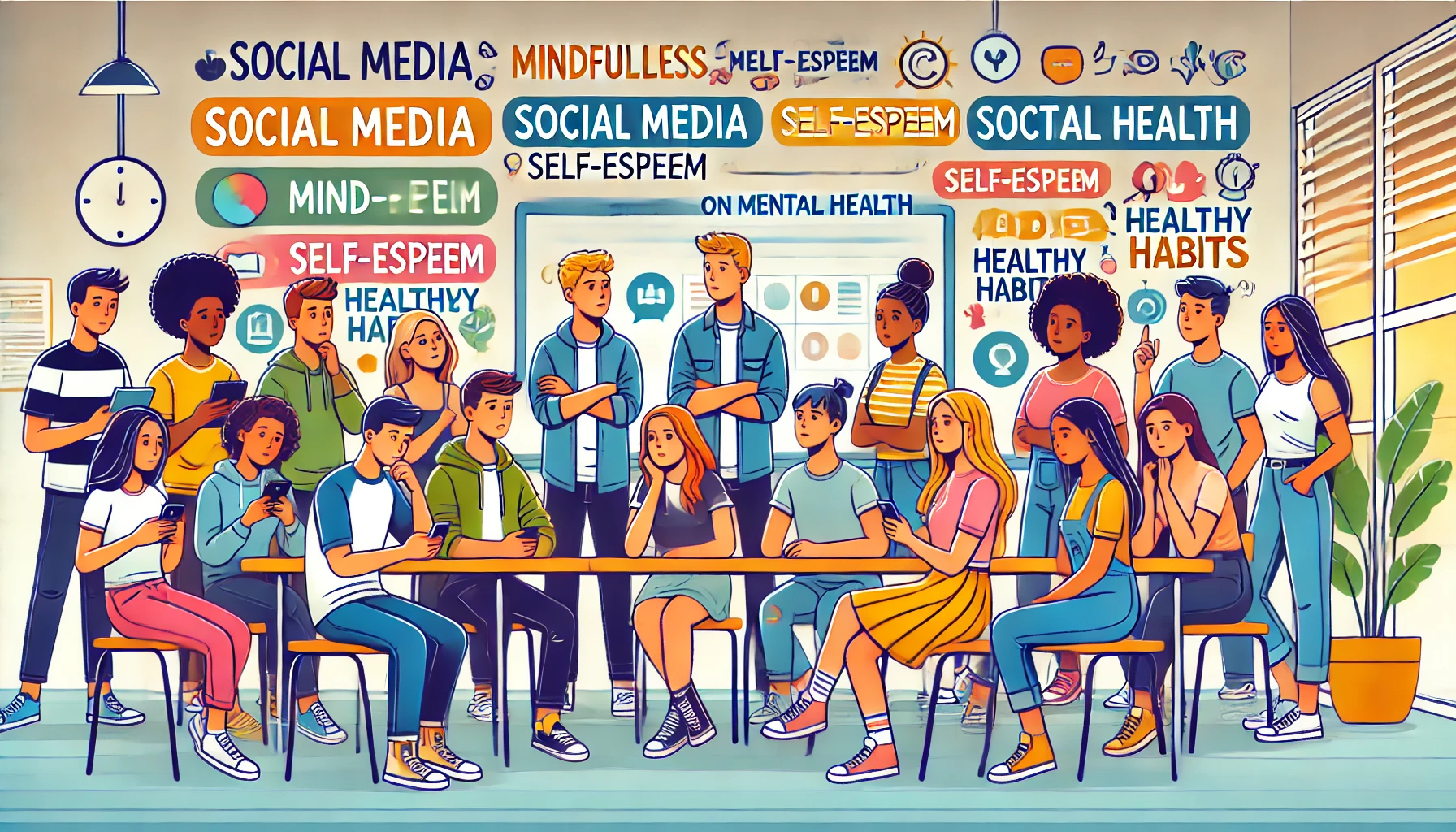Article | November 15, 2024
Unmasking the Impact: How Social Media Affects Students’ Mental Health

Here are some engaging tips and strategies that can help students understand the impact of social media on mental health and how it affects the brain. These activities can be particularly effective for middle and high school students.
- Start with the Science: How Social Media Affects the Brain
- Dopamine Feedback Loop: Explain how social media platforms are designed to release dopamine, the “feel-good” chemical, with each like, comment, or notification. This can create an addictive loop, similar to how the brain responds to gambling or drug use.
- Sleep Disruption: Discuss how the blue light emitted by screens affects the brain’s production of melatonin, a hormone that regulates sleep. Reduced sleep can lead to anxiety, depression, and impaired cognitive function.
- Attention Span and Impulsivity: Point out that constantly scrolling through fast-paced content conditions the brain to crave quick, novel stimuli, which can affect focus, impulse control, and attention span.
- Interactive Workshop: Social Media Detox Challenge
- One-Week Experiment: Ask students to reduce or eliminate their social media use for one week. Encourage them to journal their feelings, sleep quality, energy levels, and mental clarity each day.
- Class Discussion: After the week, hold a class discussion or reflective session where students share what they noticed about their mood, stress levels, sleep, and general mental well-being.
- Real-Life Case Studies: Celebrities and Influencers Speaking Out
- Show videos or articles of celebrities, athletes, and influencers who have spoken out about the mental health challenges they’ve faced due to social media. Hearing about real experiences from people they admire can make it more relatable and impactful for students.
- Guided Discussion on Social Comparison and Self-Esteem
- Highlight Filters and Curation: Discuss how social media often shows an edited, idealized version of people’s lives. Explain how seeing only the “best moments” of others can lead to social comparison and negative self-esteem.
- Activity: Show before-and-after images or editing examples to illustrate the unrealistic standards set by social media. Have students share their thoughts on how seeing “perfect” images impacts their self-perception.
- Mindfulness and Media Literacy Activities
- Practice Mindful Scrolling: Teach students to become aware of their emotional responses when using social media. Ask them to notice how they feel before, during, and after scrolling.
- Identify Manipulative Tactics: Educate students on how social media apps are designed to capture their attention, such as infinite scrolling, autoplay videos, and push notifications. Understanding these tactics can help them develop healthier habits.
- Short Videos & Documentaries
- Share engaging, age-appropriate documentaries like The Social Dilemma (or clips from it) that discuss social media’s impact on mental health. This visual, storytelling approach can help students connect with the topic in a memorable way.
- Role-Playing or Simulation Activity
- Empathy Exercise: Have students role-play as people who are experiencing FOMO (Fear of Missing Out) or cyberbullying on social media. Then discuss the emotions and responses they felt, which can lead to a greater understanding of social media’s impact on mental health.
- Creative Project: Digital Clean-Up or Redesigning Social Media
- Digital Clean-Up Challenge: Encourage students to go through their social media accounts and unfollow any accounts that make them feel bad about themselves or are not mentally uplifting.
- Design a “Healthier” Social Media Platform: Have students brainstorm and design an ideal social media platform that would prioritize mental health. What features would they include (or remove) to make it more positive?
- Journaling for Reflection
- Encourage students to keep a journal specifically for reflecting on their social media experiences. Prompts could include:
- “How do I feel after using social media?”
- “What would I rather spend my time on?”
- “What triggers feelings of FOMO or anxiety on social media?”
- Reflecting through journaling can help students become more mindful of their social media usage and its emotional impact.
- Encourage students to keep a journal specifically for reflecting on their social media experiences. Prompts could include:
- Introduce Healthy Social Media Habits
- Encourage them to set boundaries like:
- Limiting screen time and scheduling “tech-free” times.
- Unfollowing accounts that trigger negative feelings.
- Using social media with a purpose rather than out of habit or boredom.
- Encourage them to set boundaries like:
These strategies can help students not only understand the science and psychological impact behind social media but also develop healthier, more mindful digital habits. Making the learning process interactive and reflective can foster a deeper understanding and empower them to take control of their own digital well-being.


